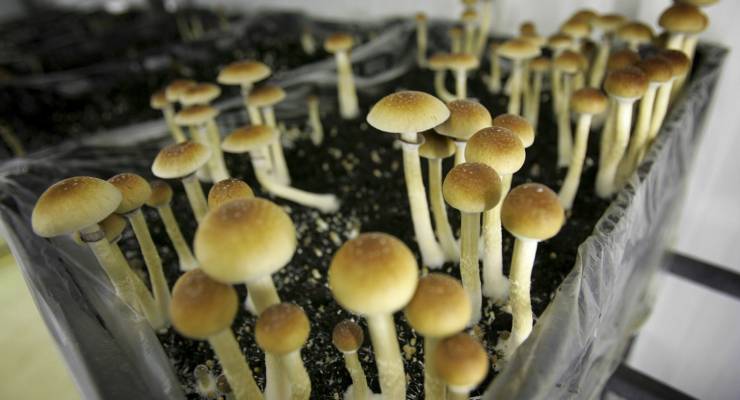
When I started writing about psychedelics in late 2020, it wasn’t hard to canvass what was happening in Australia outside the underground. There was Dr Margaret Ross’s psilocybin trial at Melbourne’s St Vincent’s Hospital and a handful of other clinical studies at various stages, but that was about it.
Since then, the number of trials has exploded. There’ll be about 15 in progress by the end of this year, looking at the efficacy of psychedelic-assisted psychotherapy for conditions ranging from PTSD, depression and anxiety to anorexia and alcohol-use disorder.
Meanwhile, Australia has improbably gone from being a laggard in the global psychedelic revival to leading the world in two important respects.
Under the Morrison government, Australia became one of the first countries to state-fund psychedelic research. Then, in February, the Therapeutic Goods Administration (TGA) surprisingly reversed its previous decision not to reschedule psilocybin and MDMA from schedule 9 to schedule 8 substances, effectively making Australia the first country to formally recognise these drugs as medicines when used in conjunction with therapy. (From July, authorised psychiatrists will be able to prescribe psilocybin for major depression and MDMA for PTSD.)
A few years ago, an interest in psychedelics might have been career-ending in academia and a non-starter in the commercial space, but in mid-2023 it’s possible to find oneself at a conference on medicinal psychedelics at a heritage-listed hotel with nary a tie-dye T-shirt in sight.
If this still sounds anomalous, consider the following.
The global medicinal psychedelic drugs market grew from $6.3 billion in 2022 to $7.3 billion in 2023 and might be worth more than double that by the end of the decade. There are four psychedelics-related stocks trading on the ASX. Ask any psychedelic investor and they’ll tell you: ’shrooms are the new weed.
Back in April when I registered for Informa Connect’s Medicinal Psychedelics Conference in Melbourne, the list of presenters read like a virtual who’s who of psychedelic researchers in Australia. In May, an updated agenda looked very different. Six speakers appeared to have dropped out.
Intrigued, I asked around and was told the presenters had, in effect, unionised and pulled out. Why? Because Informa was not offering speakers’ fees of any kind and had refused to cover travel or accommodation expenses for those coming from interstate. Informa management told me the company is a business, not an NGO, and could not run the conference at a profit while paying speakers. It also denied that travel and accommodation expenses were not offered.
Whatever the case, the hastily refreshed line-up felt like a sign of the times: fewer boffins, more suits.
In his opening remarks, chair Prash Puspanathan called back to the flower children when he said of the plants and fungi from which the classic psychedelics derive that we are their “custodians and beneficiaries but never their owners”. (Those rushing to patent psychedelics might beg to differ.)
Dr Michael Winlo, managing director of ASX-listed biotech Emyria, struck a similarly bridge-building note when he said: “We’re going to have to stop fighting with the hippies.” I’m sure I wasn’t the only person in the room wondering if we were being asked to reach this peace by submitting to capitalism’s ravening appropriation of everything once countercultural.
There was a lot of talk — given estimates of treatment regimens cost upwards of $25,000 — of who will be able to access psychedelic-assisted psychotherapy from July. This is a vital consideration when we know financial insecurity and psychological distress often go hand in hand, but one markedly ironic in the context of a one-day conference charging $1295 a ticket.
There were also presentations of a distinctly futuristic bent: the fascinating pairing of psychedelics and virtual reality and “next-generation therapeutics” including both shorter- and longer-acting psychedelics and — hang on to your hemp hat — non-hallucinogenic psychedelics. One player is drug development start-up Psylo, whose smooth-talking CEO Joshua Ismin stated the problem as well as anybody: antidepressant use has doubled in Australia in the past decade and wait times for psychologists have ballooned to between six and 12 months.
Herein lies the great hope of psychedelics. But where some see a panacea, others detect a hype cycle. Perhaps the day belonged to University of Auckland academic Suresh Muthukumaraswamy who, in his puckish, “damp squib” of a speech, teased the TGA for jumping the gun and said what few dared admit: while early results are promising, the evidence base for medicinal psychedelics remains, for now, weak and beset with methodological issues.
Fighting with hippies will be the least of the biotech industry’s troubles if its great psychedelic gamble doesn’t pay off.








Having dropped mushrooms on a half-dozen occasions, I’m not sure how well the drug will perform under ‘clinical’ settings. It can certainly be self-revelatory, outlook changing, and efficacious, but I’m also aware that it can bite you in the butt under the wrong circumstances.
Read the work of Stan Grof (a psychiatrist) from decades ago.
Cool. The hippies were right all along.
Cool. The hippies were right all along.